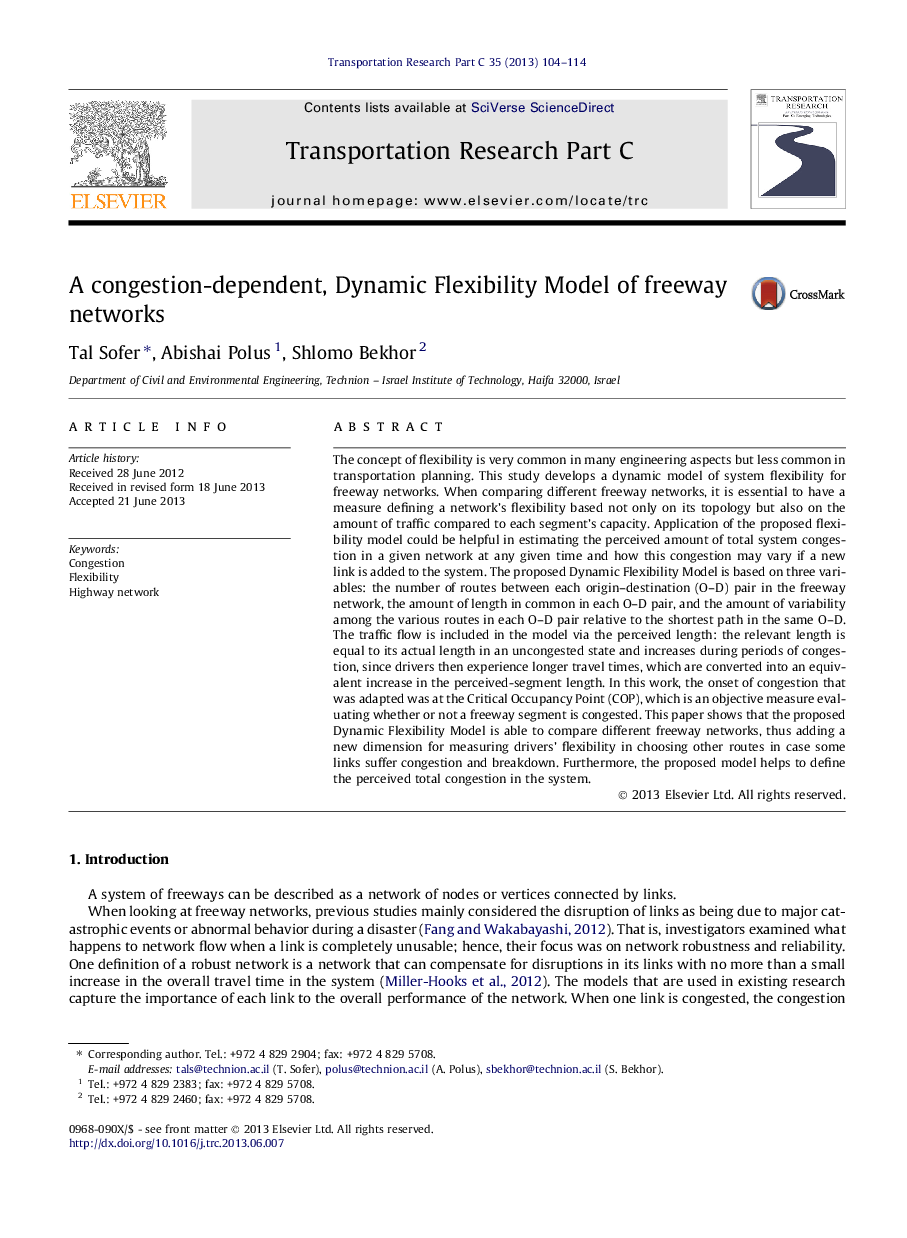| کد مقاله | کد نشریه | سال انتشار | مقاله انگلیسی | نسخه تمام متن |
|---|---|---|---|---|
| 526485 | 869121 | 2013 | 11 صفحه PDF | دانلود رایگان |

• A Dynamic Flexibility Model is offered that can estimate the “system flexibility”.
• The model offered can evaluate and compare the flexibility of highway networks.
• The model is able to compare different networks in regard to their perceived congestion.
The concept of flexibility is very common in many engineering aspects but less common in transportation planning. This study develops a dynamic model of system flexibility for freeway networks. When comparing different freeway networks, it is essential to have a measure defining a network’s flexibility based not only on its topology but also on the amount of traffic compared to each segment’s capacity. Application of the proposed flexibility model could be helpful in estimating the perceived amount of total system congestion in a given network at any given time and how this congestion may vary if a new link is added to the system. The proposed Dynamic Flexibility Model is based on three variables: the number of routes between each origin–destination (O–D) pair in the freeway network, the amount of length in common in each O–D pair, and the amount of variability among the various routes in each O–D pair relative to the shortest path in the same O–D. The traffic flow is included in the model via the perceived length: the relevant length is equal to its actual length in an uncongested state and increases during periods of congestion, since drivers then experience longer travel times, which are converted into an equivalent increase in the perceived-segment length. In this work, the onset of congestion that was adapted was at the Critical Occupancy Point (COP), which is an objective measure evaluating whether or not a freeway segment is congested. This paper shows that the proposed Dynamic Flexibility Model is able to compare different freeway networks, thus adding a new dimension for measuring drivers’ flexibility in choosing other routes in case some links suffer congestion and breakdown. Furthermore, the proposed model helps to define the perceived total congestion in the system.
Journal: Transportation Research Part C: Emerging Technologies - Volume 35, October 2013, Pages 104–114